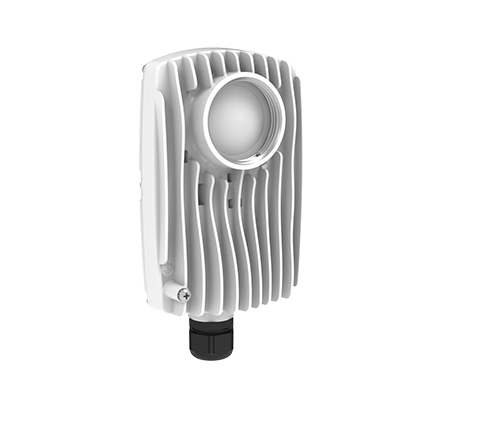Experience the perfect balance of performance and price with the new Mimosa C6x Lite Edition — built for today, ready for tomorrow.

Mimosa CEO Brian Hinman recently joined Mimosa’s "Dustin & Eric" Podcast to discuss the Mimosa N5-45 sector antennas.

Mimosa CEO Brian Hinman recently sat down with Mimosa’s Dustin and Eric to answer a few questions about the Mimosa N5-45 sector antennas. [Edited for clarity.]
A: Thank you, Dustin and Eric. I have always loved antennas and antenna design - when I was a small child, one of my hobbies was ham radio, and I then went on to design antennas in college. There was a lot of math involved back then – of course these days we have supercomputers create the projections. And now we’re bringing sectors back with the introduction of the world’s best sector antenna! I’ve seen our radios work with many third-party antennas and knew we could engineer the optimal Mimosa antennas.
A: We announced the N5-45x2 2-port and N5-45x4 4-port antennas. The N5-45x2 2-port sector antenna works with third party radios, and the N5-45X4 4 port sector antenna is designed and engineered specifically for the Mimosa A5c.
A: Yes, you can stack them and turn them, or install them side by side, which is a great feature for tower deployments as you typically pay per linear foot, so it will be cheaper to deploy on towers.
A: We wanted to improve on some limitations we saw with other horn and sector antennas. We set out to have as good a front-to-back (FTB) ratio as the industry’s best horns but with higher gain, and we ended up outperforming on both the gain and FTB ratio. It is simply a fantastic sector antenna.
A: Sure. A lot of people have adopted horns in the past for good reasons. In today’s environment, which is dominated by interference (either on towers or on the subscriber side where you have to deal with 5GHz interference coming from inside the home), there was a logical move to reduce side lobes by deploying horns or running narrower sectors. But what you give up with a horn antenna is gain. Most horns are symmetric, and so you get a symmetric pattern in the field, and a lot of noise – on the receive side you pick up noise where you don't want it, and on the transmit side you are blowing power where you don't want it. We knew we could do a better job.
A: When you look inside a horn antenna, you can see circular rings or choke rings, which look like speedbumps. These work really well and keep the signal from coming over the edge, and that's how you achieve great side lobe rejection. We wanted to apply the same principle, but on a long and narrow sector antenna, to make sure the pattern goes where we want it to. Our N5-45 antenna is an interesting design for a reason. The antenna PCB is in the center groove, there are nine antenna elements in the middle, and the choke is on either side. We start with a design idea and then we do genetic optimizations with 100 parameters, and we optimize them all towards the goal of maximizing gain and minimizing side lobes.
A: As I mentioned earlier, we designed a 2-port antenna for third-party radios and a 4-port specifically for our A5c access point. People have asked whether they can use the 4-port antenna and hook up two 2-port radios – and the answer is yes, but only if you run sync on the radios; if not, you’ll blow out your radio! The N5-45x4 is perfect for people who want a 45 degree pattern and are using the Mimosa A5c. You will achieve the highest gain as these have been designed to work together, can be coaligned and use the least amount of space on the tower.
A: There are some people using 16 element panels to get the highest gain. The problem with that solution is that the elevation beam width is only +/- 2 degrees, so you will potentially miss some of your subscribers in that pattern, and you could be way off target. With the N5-45 antenna, which is a similar length panel with two separate arrays, the beam width is +/- 4 degrees and with steering within that, you can hit all the clients as the radio will beamform up and down. I also wanted to mention down tilt. We have put in 2 degrees of down tilt to make the back lobe tilt up 2 degrees. One obvious reason for this is that you are usually shooting down from a higher location, but the second reason is that it gets the back lobe out of the way of clients on the opposite end.
A: The key concern in the industry today is to get maximum spectrum reuse by using GPS sync as there is not enough spectrum. To mitigate interference as much as possible, we have the chokes working as speed bumps as we discussed. And we also use metal end caps, not plastic, tilted at 20 degrees to knock off any interfering side lobes.
A: Yes, they do, and in fact, these are the only sectors engineered to operate over the entire spectrum of 4.9-6.4 GHz. In the US, we can use 4.9 GHz for public safety applications, and in other parts of the world, 5.9 -6.4 GHz is available to get out of the congestion of the 5 GHz spectrum.
For more information, watch the entire podcast here https://youtu.be/KN66vEaTJt4?t=9m20s or see https://mimosa.co/product/n5-45